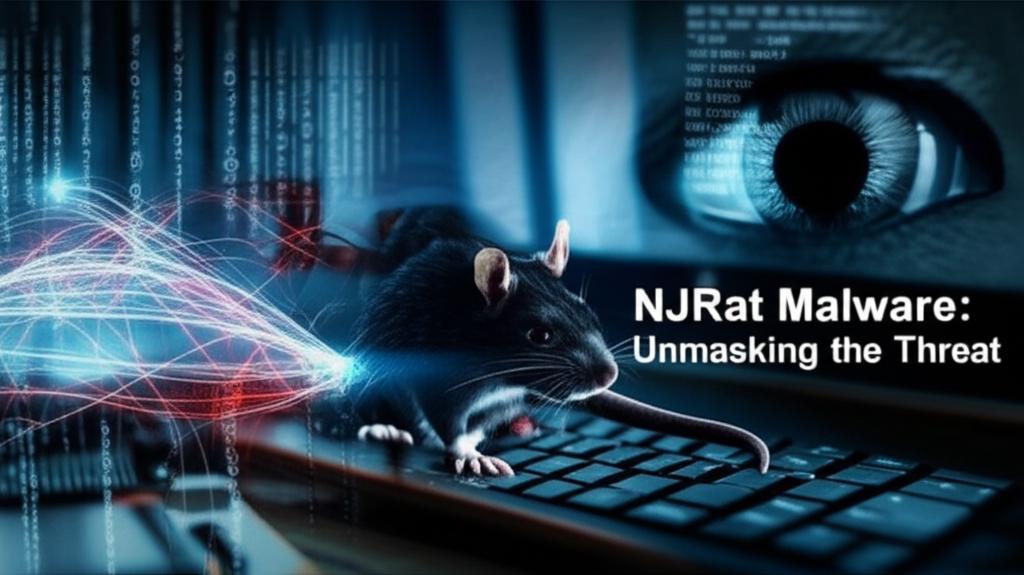Unmasking the Dangerous NJRat Malware Threat
What is NJRat Malware?
NJRat is a potent and pervasive Remote Access Trojan (RAT) that has been a significant player in the cyber threat landscape for over a decade. First detected around 2013, this sophisticated malware grants attackers extensive control over infected systems, making it a critical concern for individuals and organizations alike. Originating primarily from the Middle East, NJRat quickly gained notoriety for its robust capabilities in surveillance, data theft, and system manipulation.
How NJRat Works: The Infection Chain
The operational mechanism of NJRat is typical of many RATs, focusing on stealth and persistence once a system is compromised. Its primary infection vectors include:
- Phishing Campaigns: Malicious emails containing infected attachments (e.g., seemingly harmless documents, executables) or links to compromised websites.
- Drive-by Downloads: Exploiting vulnerabilities in web browsers or software when a user visits a malicious website.
- Exploit Kits: Leveraging software flaws to install the malware without user interaction.
- Removable Media: Spreading through USB drives or other external storage devices.
Once NJRat infiltrates a system, it establishes persistence by modifying system registries, creating scheduled tasks, or embedding itself within legitimate processes. It then connects to a Command and Control (C2) server, allowing the attacker to remotely manage the compromised machine. This C2 communication is often encrypted to evade detection.
Key Features and Destructive Capabilities of NJRat
The reason NJRat is considered so dangerous is its comprehensive set of features designed for espionage and data exfiltration. These capabilities allow attackers to:
| Capability | Description |
|---|---|
| Remote Desktop Access | View and control the victim’s screen in real-time. |
| Keylogging | Record all keystrokes, capturing passwords, messages, and sensitive information. |
| Webcam/Microphone Control | Secretly activate the device’s camera and microphone for surveillance. |
| File Management | Upload, download, execute, rename, or delete files on the compromised system. |
| Password & Credential Theft | Harvest stored passwords from browsers, email clients, and other applications. |
| Registry Manipulation | Modify system settings to establish persistence or disable security features. |
| Process Management | View and terminate running processes. |
| DDoS Attacks | Utilize the compromised machine as part of a botnet to launch Distributed Denial of Service attacks. |
The Impact of NJRat Attacks
The consequences of an NJRat infection can be severe and far-reaching. Victims may face:
- Data Breaches: Theft of personal identifiable information (PII), financial data, intellectual property, and trade secrets.
- Financial Loss: Direct theft of funds, unauthorized transactions, or extortion.
- Privacy Invasion: Extensive surveillance leading to a complete compromise of personal and professional privacy.
- System Degradation: Performance issues, system crashes, and disruption of normal operations.
- Reputational Damage: For businesses, a breach can severely damage trust and brand image.
Initially, NJRat was linked to state-sponsored actors in the Middle East, targeting specific entities. However, its source code eventually leaked, leading to its widespread adoption by various cybercriminal groups globally, making it a threat to individuals, small businesses, and large enterprises alike.
How to Protect Against NJRat Malware
Defending against NJRat requires a multi-layered approach to cybersecurity. Here are essential strategies:
- Robust Antivirus/EDR Solutions: Implement and keep up-to-date endpoint protection that can detect and neutralize NJRat.
- Firewall Protection: Configure firewalls to block unauthorized outbound connections, particularly to known C2 servers.
- Email Security: Be wary of suspicious emails, attachments, and links. Use email filtering and security gateways.
- Software Updates: Regularly update operating systems, browsers, and all software to patch vulnerabilities that NJRat could exploit.
- Strong Passwords & MFA: Use complex, unique passwords and enable multi-factor authentication (MFA) wherever possible.
- Network Segmentation: Isolate critical systems to limit the lateral movement of NJRat if a breach occurs.
- Regular Backups: Maintain offline backups of critical data to ensure recovery in case of data loss or encryption.
- Employee Training: Educate users about phishing, social engineering, and safe browsing practices.
Conclusion
NJRat malware remains a persistent and significant threat in the cybersecurity landscape due to its extensive capabilities and adaptability. Understanding how NJRat operates and implementing proactive defense strategies are crucial steps in protecting your digital assets and privacy. Staying vigilant and adopting comprehensive security measures can significantly reduce the risk of falling victim to this dangerous Remote Access Trojan.







